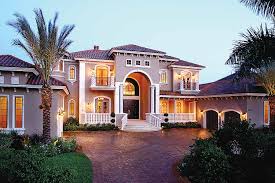In some sense we can say that insurance appears simultaneously with the appearance of human society. We know of two types of economies in human societies: money economies (with markets, money, financial instruments and so on) and non-money or natural economies (without money, markets, financial instruments and so on). The second type is a more ancient form than the first. In such an economy and community, we can see insurance in the form of people helping each other. For example, if a house burns down, the members of the community help build a new one. Should the same thing happen to one's neighbour, the other neighbours must help. Otherwise, neighbours will not receive help in the future. This type of insurance has survived to the present day in some countries where modern money economy with its financial instruments is not widespread (for example countries in the territory of the former Soviet Union).
Turning to insurance in the modern sense (i.e., insurance in a modern money economy, in which insurance is part of the financial sphere), early methods of transferring or distributing risk were practised by Chinese and Babylonian traders as long ago as the 3rd and 2nd millennia BC, respectively.[7] Chinese merchants travelling treacherous river rapids would redistribute their wares across many vessels to limit the loss due to any single vessel's capsizing. The Babylonians developed a system which was recorded in the famous Code of Hammurabi, c. 1750 BC, and practised by early Mediterranean sailing merchants. If a merchant received a loan to fund his shipment, he would pay the lender an additional sum in exchange for the lender's guarantee to cancel the loan should the shipment be stolen.
Achaemenian monarchs of Iran were the first to insure their people and made it official by registering the insuring process in governmental notary offices. The insurance tradition was performed each year in Norouz (beginning of the Iranian New Year); the heads of different ethnic groups as well as others willing to take part, presented gifts to the monarch. The most important gift was presented during a special ceremony. When a gift was worth more than 10,000 Derrik (Achaemenian gold coin) the issue was registered in a special office. This was advantageous to those who presented such special gifts. For others, the presents were fairly assessed by the confidants of the court. Then the assessment was registered in special offices.
The purpose of registering was that whenever the person who presented the gift registered by the court was in trouble, the monarch and the court would help him. Jahez, a historian and writer, writes in one of his books on ancient Iran: "[W]henever the owner of the present is in trouble or wants to construct a building, set up a feast, have his children married, etc. the one in charge of this in the court would check the registration. If the registered amount exceeded 10,000 Derrik, he or she would receive an amount of twice as much."[1]
A thousand years later, the inhabitants of Rhodes invented the concept of the 'general average'. Merchants whose goods were being shipped together would pay a proportionally divided premium which would be used to reimburse any merchant whose goods were jettisoned during storm or sinkage.
The Greeks and Romans introduced the origins of health and life insurance c. 600 AD when they organized guilds called "benevolent societies" which cared for the families and paid funeral expenses of members upon death. Guilds in the Middle Ages served a similar purpose. The Talmud deals with several aspects of insuring goods. Before insurance was established in the late 17th century, "friendly societies" existed in England, in which people donated amounts of money to a general sum that could be used for emergencies.
Separate insurance contracts (i.e., insurance policies not bundled with loans or other kinds of contracts) were invented in Genoa in the 14th century, as were insurance pools backed by pledges of landed estates. These new insurance contracts allowed insurance to be separated from investment, a separation of roles that first proved useful in marine insurance. Insurance became far more sophisticated in post-Renaissance Europe, and specialized varieties developed.
Toward the end of the seventeenth century, London's growing importance as a centre for trade increased demand for marine insurance. In the late 1680s, Edward Lloyd opened a coffee house that became a popular haunt of ship owners, merchants, and ships’ captains, and thereby a reliable source of the latest shipping news. It became the meeting place for parties wishing to insure cargoes and ships, and those willing to underwrite such ventures. Today, Lloyd's of London remains the leading market (note that it is not an insurance company) for marine and other specialist types of insurance, but it works rather differently than the more familiar kinds of insurance.
Insurance as we know it today can be traced to the Great Fire of London, which in 1666 devoured 13,200 houses. In the aftermath of this disaster, Nicholas Barbon opened an office to insure buildings. In 1680, he established England's first fire insurance company, "The Fire Office," to insure brick and frame homes.
The first insurance company in the United States underwrote fire insurance and was formed in Charles Town (modern-day Charleston), South Carolina, in 1732. Benjamin Franklin helped to popularize and make standard the practice of insurance, particularly against fire in the form of perpetual insurance. In 1752, he founded the Philadelphia Contributionship for the Insurance of Houses from Loss by Fire. Franklin's company was the first to make contributions toward fire prevention. Not only did his company warn against certain fire hazards, it refused to insure certain buildings where the risk of fire was too great, such as all wooden houses. In the United States, regulation of the insurance industry is highly Balkanized, with primary responsibility assumed by individual state insurance departments. Whereas insurance markets have become centralized nationally and internationally, state insurance commissioners operate individually, though at times in concert through a national insurance commissioners' organization. In recent years, some have called for a dual state and federal regulatory system (commonly referred to as the Optional federal charter (OFC)) for insurance similar to that which oversees state banks and national banks.
From Wikipedia, the free encyclopedia





